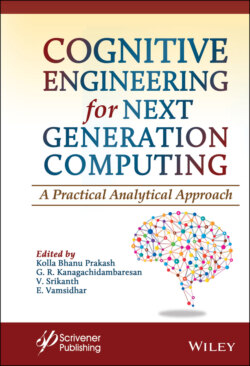Читать книгу Cognitive Engineering for Next Generation Computing - Группа авторов - Страница 45
1.11 Hypothesis Space
ОглавлениеA hypothesis is an idea or a guess which needs to be evaluated. The hypothesis may have two values i.e. true or false. For example, “All hibiscus have the same number of petals”, is a general hypothesis. In this example, a hypothesis is a testable declaration dependent on proof that clarifies a few watched marvel or connection between components inside a universe or specific space. At the point when a researcher details speculation as a response to an inquiry, it is finished in a manner that permits it to be tested. The theory needs to anticipate a predicted result. The ability to explain the hypothesis phenomenon is increased by experimenting the hypothesis testing. The hypothesis may be compared with the logic theory. For example, “If x is true then y” is a logical statement, here x became our hypothesis and y became the target output.
Hypothesis space is the set of all the possible hypotheses. The machine learning algorithm finds the best or optimal possible hypothesis which maps the target function for the given inputs. The three main variables to be considered while choosing a hypothesis space are the total size of hypothesis space and randomness either stochastic or deterministic. The hypothesis is rejected or supported only after analyzing the data and find the evidence for the hypothesis. Based on data the confidence level of the hypothesis is determined.
In terms of machine learning, the hypothesis may be a model that approximates the target function and which performs mappings of inputs to outputs. But in cognitive computing, it is termed as logical inference. The available data for supporting the hypothesis may not always structured. In real-world applications, the data is mostly unstructured. Figure 1.11 shows an upright pattern of hypothesis generation and scoring. Understanding and traversing through the unstructured information requires a new computing technology which is called cognitive computing. The intellectual frameworks can create different hypotheses dependent on the condition of information in the corpus at a given time. When all the hypotheses are generated then they can be assessed and scored. In the below fig of, IBM’s Watson derives the responses questions and score each response. Here 100 autonomous hypothesis might be produced for a question after parsing the question and extracting the features of the question. Each generated hypothesis might be scored using the pieces of evidence.
Figure 1.11 Hypotheses generation IBM Watson.
